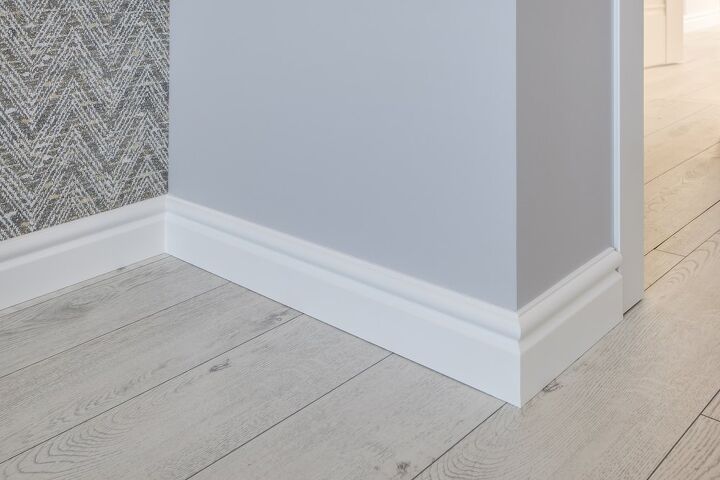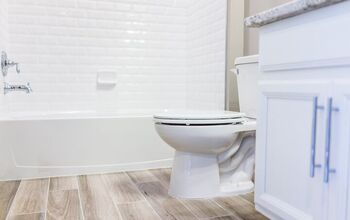Rounded Vs. Square Drywall Corners: Which One Is Better?

To the uninitiated, it may seem like all drywall is the same. After all, it is simply a covering between the guts of the house and the outside world, right? Well, there is far more to it than that. These choices impact the overall design, not just from an aesthetic standpoint but a practical one as well.
The conversation then becomes whether rounded or square drywall corners are the best. There are definitely benefits to each. Rounded corners are softer and are optimal where children are present. Square corners are easier for color transitions from wall to wall and the baseboards are easier to install. It ultimately comes down to personal preference.
Do You Need to Hire Drywall Installers?
Get free, zero-commitment quotes from pro contractors near you.

The Anatomy of Rounded vs. Square Corners
We are generally pretty used to seeing square drywall corners when we think of a home. They have been the popular choice in the area of drywall forever. But they are far from the only choice. Enter rounded corners.
The difference can be subtle in some areas and more pronounced in others. Where a wall juts out, the difference is negligible and may not jump out right away. It is more pronounced when you get into the corner of a room.
The rounded corners take up a bit more space but provide a generally softer visual than their counterpart. For those looking to change things up from the norm, rounded corners certainly make for a standout option.
Drywall Corner Beads
Rounded Corners
There is a question about whether rounded corners are “in style” but that all comes down to personal preference. After all, not everyone wants the same visual aesthetic as every other house on their block. But there are other benefits to be had from implementing rounded corners.
That said, there are also downsides for those looking to go with a rounded option. Here is what you need to know about this style of drywall.
Aesthetic
Some may argue that rounded corners are not “in style.” Others still will argue that they are great for an updated, attractive look in any room. For newer homes, in particular, rounded corners have become a common upgrade.
Moreover, it can be a way to make your rooms stand out and seem different than most other homes. Rounded corners are still not as common as their square counterparts, catching the eye of guests when they enter.
Softening the Room
A major reason why people choose rounded corners is to soften all the sharp edges that a room has. When you enter a typical room, everything comes to a sharp point. With rounded corners, that gets broken up and made to feel less stark.
Rounded corners look especially good when integrated with arched openings. The benefit here is that you don’t have to contend with trim as you would on a normal door. Just a clean opening that stands out from traditional doorways and openings.
Durability
Durability is definitely something to consider no matter what type of drywall you are considering. Standard square corners are more prone to chipping and fracturing, especially when there are underlying structural issues.
Rounded corners, on the other hand, are less susceptible to those fractures or chips. There is nothing worse than walking into a room and seeing a huge fracture creeping along the corner of the room. That is not something that rounded corners generally have to contend with, holding up over time.
Baseboards are Tough
For all the benefits to be had from installing rounded corners, there is a major downside. The downside is that it is quite difficult to install baseboards at the rounded corner. With square corners, the 90-degree angle makes it simple to install those baseboards.
But when it comes to installing rounded corners, there are natural challenges. There are rounded corner baseboards but they tend to be more costly. That is because this type of baseboards needs a natural flexibility to fit into the rounded corners.
Square Corners
It is safe to say that in the vast majority of homes, you will find square drywall corners. They are far easier to install, requiring less skill, experience, and time. Because of those factors, they are also cheaper to installed and can even be done by DIYers.
Like rounded corners, they have their downsides. Knowing more about the two will help you to make a more informed decision about which option may be best suited for you.
Easier Color Transition
Drywall is quite easy to paint, making it a versatile canvas. You can change up the entire aesthetic of a room with a quick coat of paint. If you want to get creative and expand your color palette, you can mix and match to your heart’s desire.
The good thing about square corners is that it makes for a much easier transition between colors. There is a hard endpoint for each wall, creating clearly defined borders. Rounded corners obviously do not offer the same benefits.
If you think that you are going to want to change up the color scheme, going with square corners are likely a better fit. That’s not to say that you cannot transition with rounded corners, but the transition will not be anywhere near as crisp. It makes a huge difference visually.
Baseboard Installation
Baseboards are a great way to add visual appeal to a room and create a clear boundary between the floor and wall. The right baseboards and trim can give any room a more high-end visual appeal that would otherwise not exist without them.
Installing baseboards is much easier when it comes to square corners versus rounded ones. Square corners come pre-cut in a variety of styles and designs and simply need to be installed at the joints. With no joint to be seen on rounded corners, installation becomes much tougher.
Bead Benefits
When installing drywall, an adhesive bead is used to connect the joints. Since the joints are in different places and the structure of the wall is much different between the two, that means using different corner beads during installation.
Rounded drywall corners use a larger plastic base for adhesion. These can be more costly and more difficult to install. Square drywall corners, on the other hand, generally use a tight metal corner bead. That results in a smoother, cleaner, and easier fit.
Cracking and Chipping
Square drywall corners also tend to be much more susceptible to damage in the form of fractures and chipping at the joint. That is because there is additional stress placed at the seams of the drywall. High-stress areas like door frames, windows, and corners tend to be the most susceptible to cracking and chipping.
Because the pressure is more evenly distributed throughout the curve, rounded drywall corners are not nearly as prone to these pressure damages. That’s not to say that stress fractures are a common occurrence, but they aren’t exactly uncommon, either.
Related Questions
We now know the difference between rounded and square corners (aside from the whole round vs square thing). With that out of the way, you may be left with other questions. Here are some of the most relevant related questions that consumers have asked across the web.
What are Rounded Corners Called?Rounded corners can of course be called rounded corners but there is another term. This term is generally used by contractors and more experienced DIYers. That term is bullnose. If you hear a contractor talking about bullnose corners, you know they are talking about rounded corners.
For carpentry purposes, a bullnose corner is a 90-degree rounded corner. That said, bullnose corners have applications outside of trim and finish. They have uses in stairs, tile, and even adobe homes.
What is Bullnose Corner Bead Used For?You may hear about the bead during drywall installation. But how does it pertain to bullnose corners? The bullnose corner bead is used to create a rounded, smooth look for drywall corners. It is essentially how the rounded corners become rounded.
Are Bullnose Corners in Style?When it comes down to it, bullnose corners are about whatever the architectural style of the home is. If bullnose corners are relevant to the style of house, they never go out of style. This style of drywall corner is as relevant as it ever has been.
Do You Need to Hire Drywall Installers?
Get free, zero-commitment quotes from pro contractors near you.

Rounded vs. Square Drywall Corners: What’s the Choice?
It can be tough to pick a winner between rounded and square drywall corners simply because they are so different in so many ways. One presents an entirely different aesthetic while the other provides an easier installation and perhaps greater versatility.
Rounded corners are ideal for those who want a different visual aesthetic. The rounded corners soften the edges of the room, presenting a different look. Not to mention the fact that rounded corners are much less susceptible to cracking and stress fractures.
Square edges are easier to install, including when it comes time to install the baseboards. Unless you plan to go without baseboards or want to pay more to have them installed, square corners are a better choice. Not only that, but it is much easier to shift colors in square corners. They have many clearly defined boundaries than rounded corners, allowing for a better transition from color to color.
Related Articles

Ryan Womeldorf has more than a decade of experience writing. He loves to blog about construction, plumbing, and other home topics. Ryan also loves hockey and a lifelong Buffalo sports fan.
More by Ryan Womeldorf











![How Much Weight Can a 4×4 Support Horizontally? [It Depends!]](https://cdn-fastly.upgradedhome.com/media/2023/07/31/9070333/how-much-weight-can-a-44-support-horizontally-it-depends.jpg?size=350x220)















